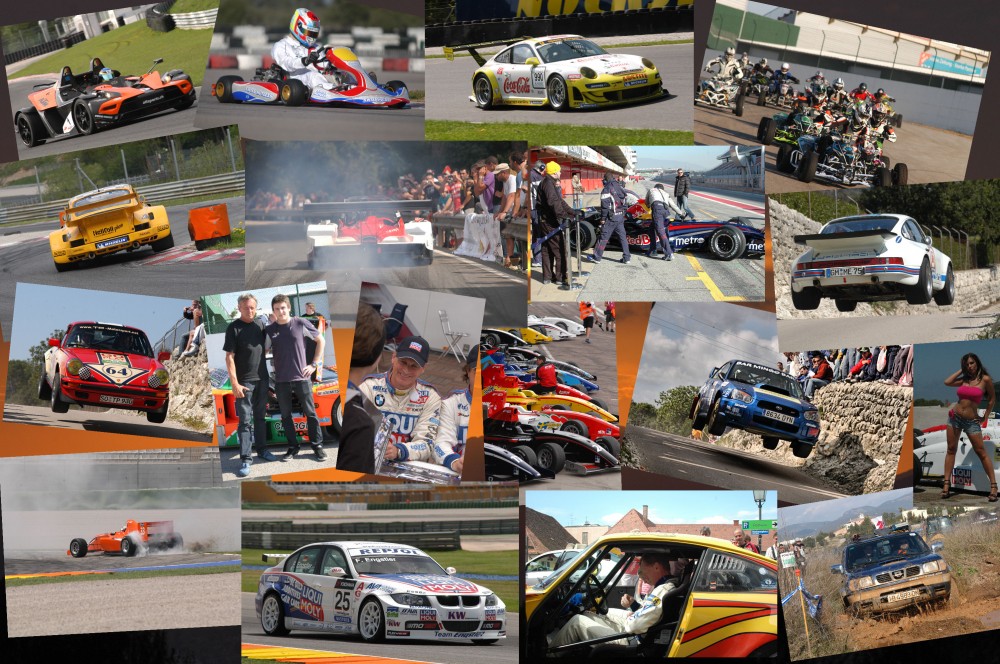Competitors from the Intercontinental Rally Challenge have revealed their delight at the news that Eurosport will show four stages of Rally d’Italia-Sardegna live.
Europe’s largest television sports channel will screen approximately six hours of coverage from the gravel-based event, which runs from 4-6 June, including live footage of the Monte Grighine stages on Saturday and the Coiluna tests on Sunday.
Paul Nagle, who co-drove Kris Meeke to the IRC title in 2009, said: "It’s not only good news for the event but also for the IRC and everyone involved. Eurosport’s onboard camera footage is brilliant for the fans watching at home and gives them a real hands-on experience of what it’s like to take part in an IRC rally."
Franz Wittmann, who drives an Interwetten Racing-run Peugeot 207 in the IRC, said: "The Eurosport coverage is one of the main reasons why my sponsor can justify bringing money into rallying. It’s also the best way to bring the sport to the people."

Eurosport will show live four stages from Sardinia’s IRC qualifier
Andersson to make IRC debut in Sardinia
Former double Junior world champion P-G Andersson will make his Intercontinental Rally Challenge debut on Rally d’Italia-Sardegna next month.
The Swede, 30, will drive a Mitsubishi Lancer Evolution X for the British JRM operation. It is the same car Gwyndaf Evans used to win the British championship-counting Pirelli Rally in April.
"It will be the first time I’ve driven the Evo X in competition although I will get a short test in Sweden tomorrow [Friday]," said Andersson. "I own an Evo IX, which I’ve driven on a few events at home, so it will be interesting to see the differences between the two cars."
Highly-rated, Andersson was a factory Suzuki driver in the World Rally Championship until the Japanese make quit the sport at the end of 2008. More recently, Andersson has driven a Skoda Fabia S2000 in the Super 2000 World Rally Championship as well as testing a Ford Focus WRC for the factory-blessed M-Sport team.
Andersson is no stranger to Sardinia’s demanding gravel roads, having tackled the Olbia-based rally five times in the past when it counted as a round of the WRC. His best result is ninth overall, which he achieved in a Suzuki Ignis Super 1600 car in 2004 and in a Suzuki SX4 WRC in 2008.
Cave satisfied after Sardinia test run
Tom Cave got his preparations for Rally d’Italia-Sardegna underway with a successful test in Wales recently.
Cave will contest at least six rounds of the Intercontinental Rally Challenge in a Proton Satria Neo Super 2000, starting with the island event from 4-6 June.
The 18-year-old British driver covered approximately 80 kilometres during the test, which he described as "constructive".
He added: "The stage we used was a bit rough, dry and dusty so a reasonable start for Sardinia. We started tweaking the settings to work towards a base set-up for the rally and I didn’t feel out of my depth in the car at all. In fact, the harder you work it, the better it is."
Cave, who will be co-driven by fellow Welshman Craig Parry, has already tackled one round of the IRC this season, taking a Ford Fiesta ST to eighth place in the IRC 2WD Cup section of Rallye Automobile Monte-Carlo in January.

Tom Cave has begun his preparations for round five of the IRC
Format change for Rallye Sanremo
Rallye Sanremo will feature asphalt stages only when it runs as round 10 of the Intercontinental Rally Challenge from 23-25 September.
The organisers, Automobile Club Sanremo (ACS), had planned to run a mixture of asphalt and gravel stages but cost implications have forced them to stick to an all-Tarmac format for the 52nd running of the famous rally.
Sergio Maiga, the ACS president, said: "Maybe we could have carried out the idea to bring Rallye Sanremo back to [the gravel stages of] Siena, but in order to do that we would have been obliged to reduce costs in sectors like safety, where we are not willing to accept any compromise.
"Furthermore we wouldn’t be able to solve any of the economic problems that a race, like the one we had in mind, would have entailed for the teams that will take part in the event and, even more, for the several private drivers that are always showing their affection to our race.
"A leg on gravel and another one on asphalt would have made necessary a change of car set-up during the race and therefore an increase in costs."
